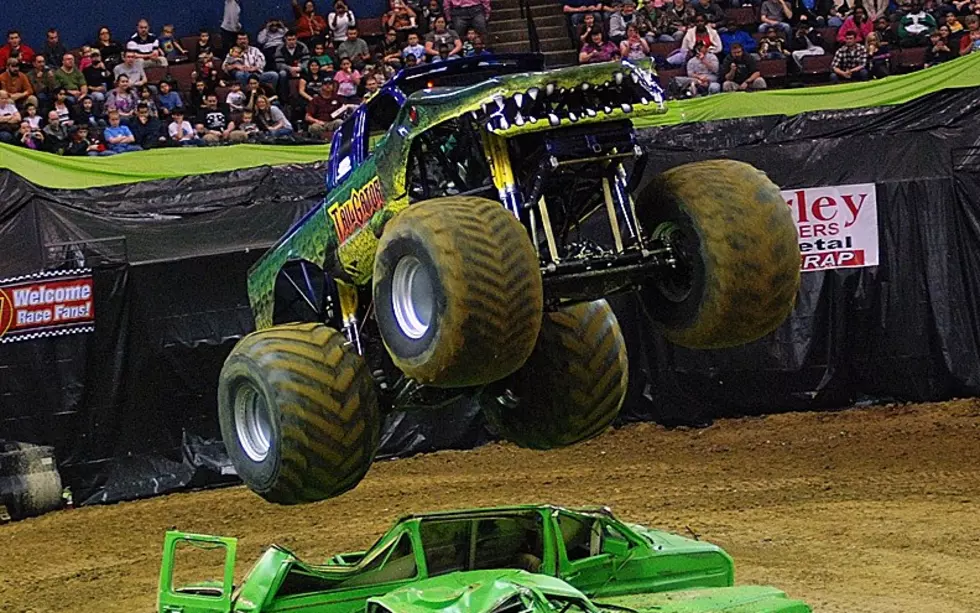![Bull Riding at the Four States Fair & Rodeo [VIDEOS]](http://townsquare.media/site/170/files/2015/09/Bull-Riding-Action-photo-by-Mimi-Campbell-at-Townsquare-Media-5.jpg?w=980&q=75)
Bull Riding at the Four States Fair & Rodeo [VIDEOS]
The rodeo at the 71st Four States Fair and Rodeo wrapped up on Saturday, Sept. 19 with Bull Riding being the last event. Bull Riding is always exciting to watch. One of the nights the bull went after the pickup riders. I never seen that happen before. I think it caught the pickup rider off guard a bit.
Bull Riding Action photo by Mimi Campbell at Townsquare Media
I combined all of the videos that I took during the rodeo into one video for the Bull Riding:
Bull Riding Action photo by Mimi Campbell at Townsquare Media
Want to learn more about rodeos? Here are some terms that you may have never heard of. I found this Rodeo Terminology website while preparing my stories about the rodeo.
Bullfighter - An athlete who protects the bull rider after he dismounts or is bucked off by distracting the bull and directing its attention to the exit gate, sometimes stepping between the bull and the bull rider
Flankman - A cowboy or cowgirl who works in the bucking chutes, adjusting the flank strap around the animal before the ride; the best flankmen and women are familiar with each individual animal and know exactly how much flank to give each animal to encourage optimal bucking.
Score - In the roughstock events, the points awarded for the difficulty of the ride (bucking) and the cowboy’s skill in riding; in the timed events, the length of the head start given to the calf or steer, which the judges calculate based on PRCA rules (each cowboy must correctly calculate how much of the required head start to allow the calf or steer to get before signaling his horse to leave the box; if he miscalculates, he will be out late and get a longer time, or will be out early and be penalized for breaking the barrier); however, when used to describe a horse (“That mare really scores well”),it refers to the horse’s obedience in staying in the box until the cowboy signals it to start the pursuit.
Try - A noun used for both cowboys and livestock, denoting grit, determination, fitness, stamina and resilience: “Give that cowboy a hand – he had a lot of try”.
Roughstock - The bucking horses and bulls used in bareback riding, saddle bronc riding and bull riding, usually bred and raised for the job.
Stock contractors - The companies that bring livestock to the arena for rodeos – bucking horses and bulls for the roughstock events and steers and calves for the timed events.
Reride - If a cowboy’s score is affected by equipment failure or a horse or bull that doesn’t buck to performance specifications, the judges may offer the cowboy a clean-slate chance on a different horse or bull.
Permit holder - A PRCA contestant who has not yet won his first $1,000 at PRCA rodeos, which enables him to apply to become a card-holding member of the organization
Drop - In roughstock events, the way a bucking horse or bull may lower its front end suddenly while kicking out in back, creating a more difficult ride; in timed events, the way a calf or steer may lower its head to avoid a catch.
Rank - An adjective of praise and respect used to describe especially challenging roughstock.
Judges - As in other sports, trained PRCA judges ensure that all participants follow PRCA rules; they determine times for runs in the timed events and scores for rides in the roughstock events; record penalties for any infractions of the rules; and inspect the arena, chutes and livestock before each competition.
Flags - Because rodeo’s timed events are measured in tenths of seconds, judges in the arena drop flags to signal the timers to stop the clocks.
Average - Usually used to describe the aggregate score for a contestant who competed in more than one round, e.g., “He had times of 9.3 and 9.8 seconds in the two rounds and placed third in the average with 19.1 seconds on two head”
Bull Riding Action photo by Mimi Campbell at Townsquare Media
See More Fair Videos
More From Power 95.9









